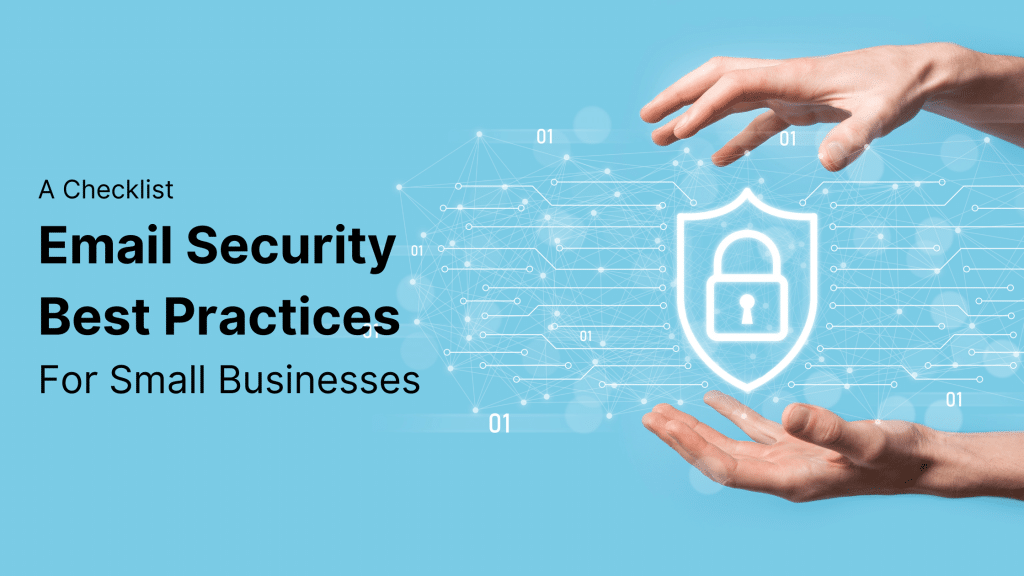
In a previous blog, we discussed why professional email is a necessity even if you’re a small business owner. While that does bring you one step closer to better business, it also increases your responsibilities towards security.
In this blog, we go over the email security best practices for you to follow for your business email.
These practices are especially important for you because hackers believe small to medium businesses have low experience in maintaining their security standards. Most often, they are right! That is why hackers have started targeting businesses of all scales rather than just going after the big players.
5 Email Security Best Practices for Small Businesses
Email Encryption
Your device when you send emails and the receiver’s device when they receive aren’t the only junctions when an email can be tampered with. Email content can be tampered even when it is in transit. That is why, it is necessary that you send emails in an encrypted format, so that the receiver can be sure what he got is the exact email which you sent.
To maximize your email security while emails are passing through , you can implement transport layer security (TLS), an email security protocol that enforces end-to-end encryption between two TLS-enabled email servers.
Sender Fraud Protection
When emails are sent from your email domain by hackers posing as you, it is known as email domain spoofing. Using this email attack, hackers misuse your email domain to send their own malicious emails to contacts in your email list or to your customers, thus bringing down your reputation and putting the recipients in grave danger.
However, email authentication protocols have evolved to catch such attempts and slow such harmful emails in an isolated environment commonly called quarantine. 3 primary sender fraud protection protocols are DMARC, SPF, and DKIM which use headers of an email with the various other email identification data points to verify whether the email really originated from the ‘from’ address that appears with every email. Implementing these protocols gives you complete control over how a receiving mail server is supposed to treat emails that fail verification.
Multi-layered Filters
The inherent threat filters built into your mailing service are not enough to keep the email threats out. As hackers become more inventive, they have found ways around native email security layers. That’s why it is imperative that your business implements third-party multi-layered email security mechanisms, where each layer deals with a specific email threat, thereby improving your all-round email security.
Becoming familiar with typical email attacks
Just as hackers get creative with their attacks, it is observed that they don’t stray much from the tested and proven methods of infiltration. Especially when they want to target a whole class of victims and don’t need to bother with tailoring their attacks too much. Common attacks such as phishing, ransomware, and zero-day attacks are easily preventable if you just pay a little attention.
To prevent zero-day infiltration, make sure your email servers and applications are always up-to-date so hackers cannot slip through the gaps.
To prevent ransomware, the best email security practices and resources are detailed in our complete guide on ransomware protection.
In order to shield yourself from phishing attacks, read our thorough resources on phishing prevention.
And to go one level deeper, we also have resources to make you aware of certain baseline tactics behind successful email attacks: social engineering.
Maximize Your Preparedness
In almost all cases where email infiltration was controlled and the damage mitigated, the victim had a set of response protocols ready to follow. When panic is not the first reaction, things can be fairly controlled. Some organizations also employ a round-the-clock cyber response team, but this may not be feasible for all businesses.
What you can do is to look after things you can control. These include:
- Take timely backups so email infiltration doesn’t wipe out data forever.
- Maintain multiple copies of crucial data so ransomware strikes don’t cause business interruptions.
- Implement strong password reset protocols to help you as soon as you see even the faintest traces of email infiltration.
- Train your employees on cyber practices and how to react when they find any suspicios mail
- Store your customers’ data in encrypted storage drives.
- Treat all emails with caution as a basic policy, so you become accustomed to scanning emails for threats.
